Can My Dog Eat Onions: A Complete Guide to Onion Toxicity
Transparency matters to us! This post may include affiliate links, which means we earn a small commission if you make a purchase through our recommendations. This is at no additional cost to you. Read our full affiliate disclosure.
You’re busy chopping onions for tonight’s dinner when your loyal companion starts sniffing around the kitchen counter with those hopeful eyes that seem to ask, “Can my dog eat onions too?” The question might seem harmless, but the answer could save your dog’s life. Onions are highly toxic to dogs and can cause serious health problems, including potentially fatal hemolytic anemia.
Even small amounts that might seem insignificant to us can trigger dangerous reactions in our four-legged family members. The toxic compounds in onions damage red blood cells, reducing oxygen transport throughout your dog’s body. What makes this especially concerning is that symptoms might not appear immediately, giving pet parents a false sense of security.
Understanding the risks, recognizing the warning signs, and knowing how to respond can make the difference between a close call and a tragedy for dog families everywhere.
Key Takeaways
- Onions Are Highly Toxic to Dogs: Even small amounts can cause serious health issues, including hemolytic anemia and organ damage
- All Forms and Varieties Are Unsafe: Raw, cooked, powdered, dehydrated, or hidden in foods—every form is dangerous
- Symptoms May Be Delayed: Signs of poisoning can appear hours or days after exposure, making prompt action critical
- Emergency Vet Care Is Essential: Onion toxicity requires professional diagnosis and treatment—success depends on timely intervention
- Prevent Exposure at Home: Store onions and related foods securely and educate family members about the risks
Why Onions Are Toxic to Dogs
The danger lurking in your kitchen’s onion bowl comes from powerful chemical compounds that your dog’s body simply cannot handle safely. Onions contain N-propyl disulfide and related compounds that trigger oxidative damage to red blood cells, leading to hemolytic anemia and oxygen deprivation. These substances attach themselves to oxygen molecules within your dog’s red blood cells, causing them to rupture and break down at an alarming rate. When red blood cells are destroyed faster than your dog’s body can replace them, tissues throughout the body begin to starve for oxygen, creating a medical emergency that can quickly become life-threatening.
How Toxic Compounds Affect Dogs
Disulfides and thiosulfinates are the primary culprits responsible for damaging canine red blood cells. These compounds work by oxidizing hemoglobin, the protein that carries oxygen in blood cells, transforming it into a form that cannot transport oxygen effectively. The damaged cells develop characteristic formations called Heinz bodies, which veterinarians can spot under a microscope during blood tests. As these compromised cells circulate through your dog’s system, they become fragile and eventually burst, releasing their contents into the bloodstream and potentially causing organ damage.
Allium Family Dangers
Onions belong to the Allium family, and every member of this plant group poses similar threats to your dog’s health. Garlic, chives, leeks, and shallots all contain similar toxic compounds that can cause the same dangerous reactions. Many pet parents assume that because garlic is sometimes marketed in pet supplements, it must be safe, but this assumption can be deadly. The concentration of toxic compounds varies among Allium plants, with some being more potent than others, but none should ever be considered safe for canine consumption.
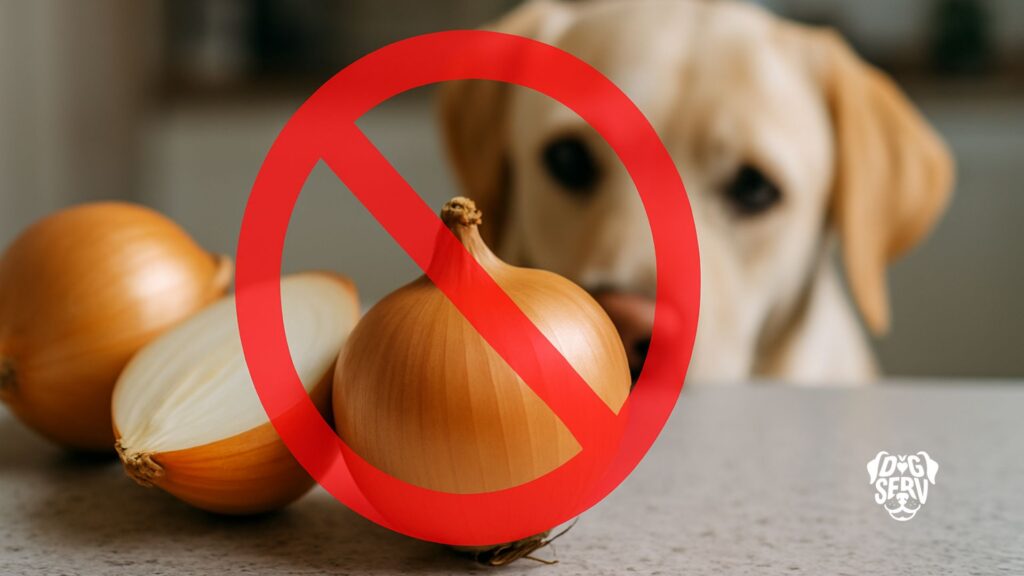
Symptoms and Timeline of Onion Poisoning
Recognizing onion poisoning in dogs can be challenging because the symptoms often don’t appear immediately after ingestion. The toxic effects may emerge within hours or can be delayed up to several days, especially with larger quantities. This delayed reaction occurs because it takes time for the toxic compounds to build up in your dog’s system and begin destroying red blood cells in significant numbers. Understanding the progression of symptoms can help you act quickly when every moment counts for your dog’s recovery and survival.
Early Gastrointestinal Signs
The first symptoms typically involve your dog’s digestive system, including vomiting, diarrhea, loss of appetite, and abdominal discomfort. These initial signs might seem like a simple stomach upset, leading many pet parents to adopt a wait-and-see approach that can prove dangerous. Your dog might also appear less energetic than usual or show reluctance to play or exercise. Some dogs experience excessive drooling or seem restless and uncomfortable, pacing around the house or having difficulty settling down for rest.
Signs of Severe Anemia and Organ Damage
As the toxicity progresses and more red blood cells are destroyed, more serious symptoms begin to appear. Pale or white gums, rapid breathing, lethargy, weakness, and reddish or brown-colored urine are all warning signs of severe anemia. Your dog’s heart may beat faster as it tries to compensate for the reduced oxygen-carrying capacity of the blood. In extreme cases, dogs may collapse, experience seizures, or fall into a coma. The brown or red coloration in urine occurs when damaged red blood cells release their contents, including hemoglobin, which the kidneys filter out and eliminate.
Timeframe for Symptoms
The timing of symptom onset depends on several factors, including the amount consumed, your dog’s size and overall health, and whether the exposure was a single large dose or multiple smaller amounts over time. Symptoms may occur within hours of ingestion but can be delayed up to a week, particularly with chronic low-level exposure. This unpredictable timeline makes onion ingestion especially dangerous, as pet parents might assume their dog is safe if no immediate symptoms appear, only to face a medical emergency days later when the damage has already become severe.
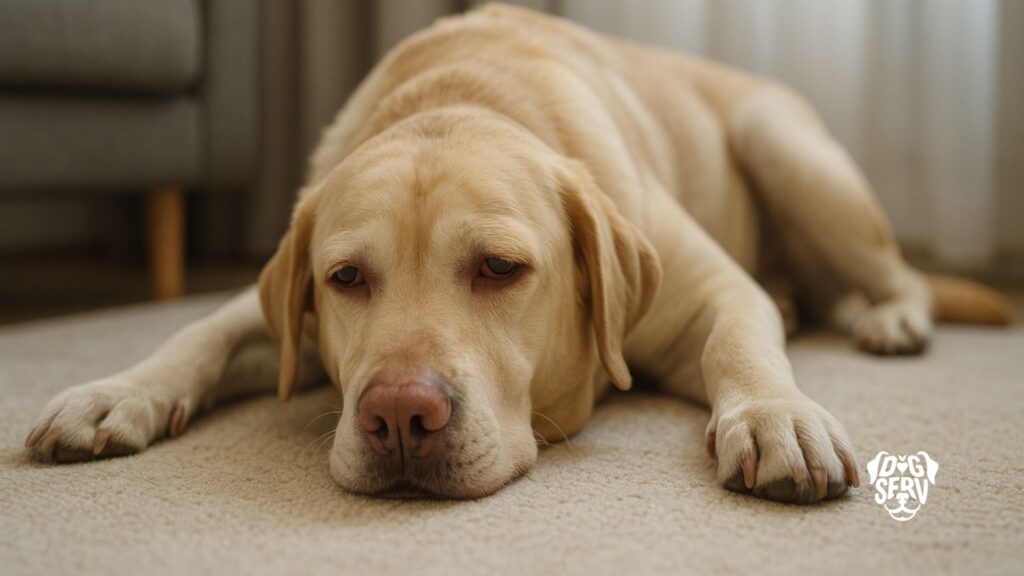
Immediate Actions and Emergency Measures
When you suspect your dog has consumed onions, time becomes your most valuable resource in preventing serious complications or death. The success of treatment often depends on how quickly professional veterinary care begins. Every minute that passes allows more toxic compounds to be absorbed into your dog’s bloodstream, where they can begin their destructive work on red blood cells. Acting swiftly and calmly can make the difference between a full recovery and a tragic outcome for your beloved companion.
What to Do First
Start by quickly gathering information about the exposure: what type of onion or onion-containing food was consumed, approximately how much, and when the ingestion occurred. Document any symptoms you observe and call your veterinarian or emergency animal hospital immediately, even if your dog appears normal. Don’t wait for symptoms to develop before seeking professional guidance, as the toxic effects may not be immediately apparent but could already be causing internal damage. Keep your dog calm and restrict their activity while you prepare to transport them to the veterinary clinic.
Veterinary Intervention Steps
Professional treatment may involve several different approaches depending on the timing and severity of the exposure. If caught within 2-4 hours, veterinarians may induce vomiting to remove undigested onion material from your dog’s stomach. Activated charcoal might be administered to bind remaining toxins in the digestive tract and prevent further absorption. IV fluids help support kidney function and maintain hydration, while oxygen therapy ensures tissues receive adequate oxygen despite reduced red blood cell function. In severe cases, blood transfusions may be necessary to replace damaged red blood cells and restore normal oxygen transport.
Why Home Remedies Can Be Dangerous
Many well-meaning pet parents attempt to treat onion poisoning at home, but these efforts often cause more harm than good. Inducing vomiting without professional supervision can be dangerous, especially if too much time has passed or if your dog is already showing signs of distress. Home remedies like milk, bread, or other supposed antidotes have no proven effectiveness against onion toxicity and may actually interfere with proper treatment. The complex nature of onion poisoning requires sophisticated monitoring and treatment that only trained veterinary professionals can provide safely and effectively.
Proper Prevention and Safe Practices
Creating a safe environment for your dog means thinking like a detective about all the ways onions might sneak into your pet’s diet. Prevention remains the most effective strategy against onion toxicity, and it starts with making your home and daily routines dog-safe. Simple changes in how you store, prepare, and dispose of onion-containing foods can eliminate virtually all risk of accidental exposure. The effort you put into prevention today could save you from heartbreak and emergency veterinary bills tomorrow.
Kitchen and Pantry Safety
Transform your food storage and preparation areas into safe zones by keeping onions, garlic, and related foods in secure containers or cabinets that your dog cannot access. Clean up onion peels, scraps, and spills immediately during meal preparation, and ensure your trash can has a tight-fitting lid that curious dogs cannot open. Be especially careful during holiday cooking or large meal preparations when multiple family members might be working in the kitchen and usual safety protocols might be overlooked. Consider installing childproof latches on lower cabinets where you store potentially dangerous foods.
Recognizing Hidden Ingredients
Many packaged foods, sauces, soups, and snacks contain onion powder or garlic powder, which are actually more concentrated and dangerous than fresh onions. Always read ingredient labels carefully before sharing any human food with your dog, paying special attention to seasonings, flavor enhancers, and preservatives. Baby food, which some pet parents use for sick dogs, often contains onion powder and should be avoided unless specifically labeled as suitable for pets. Restaurant leftovers and takeout foods frequently contain hidden onion ingredients that might not be obvious from their appearance or taste.
Educating Family and Guests
Everyone in your household should understand the serious dangers that onions pose to your dog’s health. Teach children and visitors about foods that are off-limits for your pet, and establish clear rules about not feeding table scraps without permission. Create a list of dog-safe treats that family members and guests can offer instead when they want to share food with your pet. During parties or gatherings, consider confining your dog to a safe area where they cannot access dropped food or receive unauthorized treats from well-meaning guests who might not understand the risks.
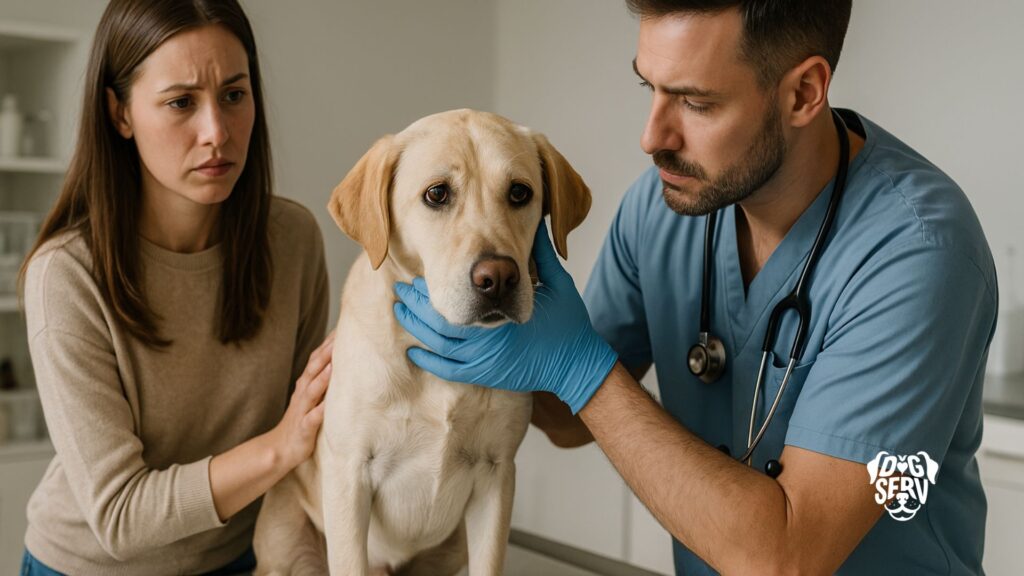
Veterinary Diagnosis and Treatment
When you arrive at the veterinary clinic with a suspected case of onion poisoning, your veterinarian will need to work quickly to assess the situation and begin appropriate treatment. Professional diagnosis involves specific blood tests and examinations that can detect the characteristic changes onion toxicity causes in your dog’s system. The complexity of treating onion poisoning requires medical expertise and equipment that goes far beyond basic first aid, making professional veterinary care absolutely essential for your dog’s survival and recovery.
Diagnostic Tests and Monitoring
Blood work will reveal the presence of Heinz bodies, which are distinctive formations that appear in red blood cells damaged by onion toxicity. Complete blood counts help veterinarians assess the severity of anemia and determine how many red blood cells have been destroyed. Urinalysis can detect the presence of hemoglobin and other breakdown products that indicate ongoing red blood cell destruction. Additional tests may monitor kidney and liver function to ensure these vital organs are not being damaged by the toxic effects or the body’s response to the poisoning.
Treatment Strategies and Recovery
Treatment focuses on removing remaining toxins from your dog’s system while supporting their body through the recovery process. Decontamination procedures, IV fluid therapy, and careful monitoring are essential components of successful treatment. Blood transfusions may be necessary in severe cases where anemia has become life-threatening. The recovery process can take several days to weeks, depending on the severity of the poisoning and how quickly treatment began. Throughout this period, veterinarians will monitor blood counts and organ function to ensure your dog is responding well to treatment.
Special Risk Factors and Considerations
Not all dogs face the same level of risk from onion exposure, and understanding the factors that make some pets more vulnerable can help you take appropriate precautions. Certain characteristics like size, age, and existing health conditions can significantly influence how severely a dog might be affected by onion toxicity. Recognizing these risk factors allows you to be extra vigilant if your dog falls into a higher-risk category and helps veterinarians tailor their treatment approach to your pet’s specific needs.
Small Breeds and Puppies
Smaller dogs and young puppies are at much greater risk from even tiny amounts of onion exposure because their smaller body size means toxic compounds become more concentrated in their systems. A few onion rings that might only cause mild stomach upset in a large dog could trigger severe anemia in a Chihuahua or Yorkshire Terrier. Puppies have less developed detoxification systems and may struggle more than adult dogs to process and eliminate toxic compounds. Their smaller blood volume also means that the loss of even a relatively small number of red blood cells can quickly become life-threatening.
Chronic, Low-Level Exposure
Regular consumption of small amounts of onion-seasoned foods can cause cumulative damage over time, even if each individual exposure seems harmless. This pattern is particularly dangerous because the gradual onset of symptoms might be attributed to aging or other health issues rather than ongoing toxicity. Dogs who regularly receive table scraps or live in households where onion powder is frequently used in cooking face this type of chronic exposure risk. The cumulative effect can eventually overwhelm the dog’s ability to regenerate healthy red blood cells, leading to persistent anemia.
Co-existing Health Conditions
Dogs with existing anemia, heart conditions, or other metabolic issues may deteriorate much faster when exposed to onion toxicity and require more aggressive treatment. Senior dogs often have reduced organ function that makes it harder for their bodies to cope with the additional stress of fighting off toxic effects. Dogs taking certain medications might have interactions that complicate treatment, and those with compromised immune systems may struggle to recover from the damage caused by onion compounds.
What to Avoid: Unsafe Foods and Hidden Dangers
The threat of onion poisoning extends far beyond the obvious sources like whole onions sitting on your kitchen counter. Many everyday foods and products contain hidden onion or garlic ingredients that can catch unsuspecting pet parents off guard. Learning to identify these hidden dangers and consistently avoiding them requires vigilance and education, but this knowledge forms the foundation of keeping your dog safe from accidental poisoning.
Packaged and Restaurant Foods
Soups, sauces, baby food, seasoned snacks, and prepared meals frequently contain onion or garlic powder as flavor enhancers. These powdered forms are actually more concentrated and dangerous than fresh onions, making them particularly hazardous for dogs. Restaurant meals, takeout food, and deli items almost always contain some form of onion seasoning, even in dishes where you might not expect it. Pizza, Chinese food, Italian dishes, Mexican cuisine, and many other popular foods routinely include onion or garlic as standard ingredients.
Allium Family Plants and Seasonings
Beyond onions themselves, the entire Allium family poses similar threats, including garlic, chives, leeks, scallions, and shallots in any form. Dried herbs, seasoning blends, and flavor powders often combine multiple Allium family ingredients, multiplying the toxic potential. Garden plants in this family can be equally dangerous if your dog has access to outdoor spaces where these plants grow. Even ornamental Allium varieties planted for their attractive flowers contain the same toxic compounds as their culinary cousins.
Unsafe Home Remedies
Some folk remedies and internet advice suggest using garlic as a natural flea repellent or immune system booster for dogs, but these recommendations are based on outdated information and can be extremely dangerous. No amount of onion or garlic should be considered safe for dogs, regardless of the claimed health benefits. Commercial pet products that claim to contain “safe” amounts of garlic should be avoided, as there is no established safe dosage for any Allium family ingredient in canine diets.
Recognizing and Responding to Overconsumption
When onion poisoning occurs, your ability to recognize the emergency and respond appropriately can determine whether your dog survives and recovers fully. The progression from initial exposure to life-threatening complications can happen quickly, making rapid recognition and response absolutely critical. Understanding what constitutes a true emergency versus manageable symptoms helps you make informed decisions about when to seek immediate veterinary care versus when you might have slightly more time to arrange treatment.
Emergency Symptoms to Watch For
Immediate veterinary attention is required if your dog shows weakness, pale or white gums, brown or reddish urine, rapid or labored breathing, discolored mucous membranes, or collapse. These symptoms indicate that significant red blood cell destruction has already occurred and your dog’s oxygen-carrying capacity has been severely compromised. Seizures, loss of consciousness, or inability to stand represent medical emergencies that require immediate intervention. Even if symptoms seem mild initially, they can progress rapidly, so any combination of concerning signs should prompt immediate veterinary consultation.
Prognosis and Recovery
Dogs who receive prompt professional treatment often recover well from onion poisoning, but the prognosis depends heavily on the amount consumed, the timing of treatment, and the severity of anemia that develops. Recovery can take several days to weeks as the body regenerates healthy red blood cells to replace those that were damaged. During this period, dogs may need restricted activity and careful monitoring to prevent overexertion while their blood counts return to normal levels. Long-term effects are rare in dogs who receive appropriate treatment, but delayed or inadequate care can result in permanent organ damage or death.
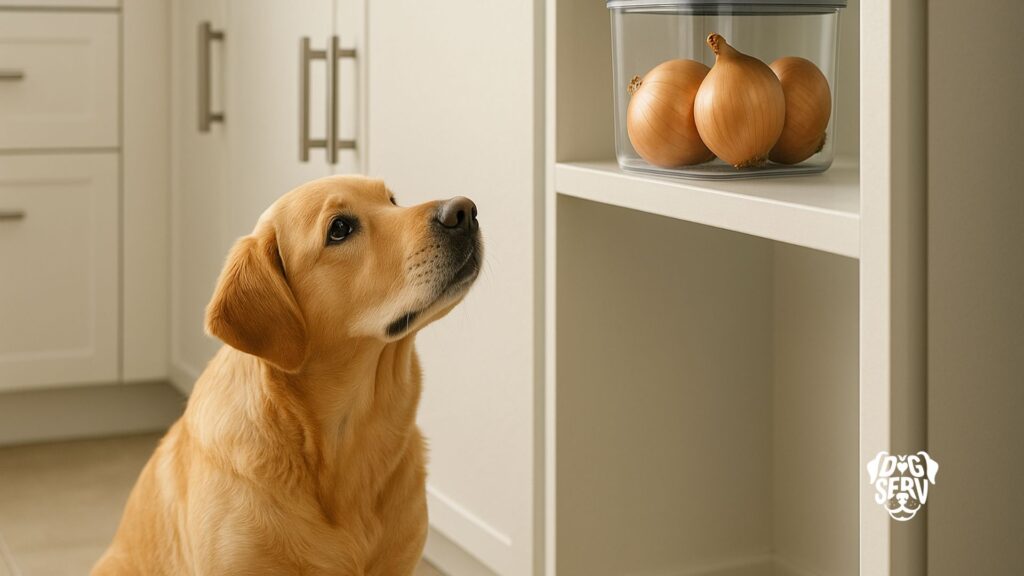
Alternative Healthy Treats for Dogs
Instead of sharing your onion-seasoned meals, you can offer your dog plenty of safe, nutritious alternatives that satisfy their desire for variety without risking their health. Many vegetables provide excellent nutrition and can serve as healthy, low-calorie treats that most dogs enjoy. Carrots offer a satisfying crunch and are rich in beta-carotene, while green beans provide fiber and vitamins without excess calories. Cucumber slices make refreshing treats, especially during warm weather, and sweet potato provides natural sweetness along with beneficial nutrients. Always introduce new treats gradually and in moderation to avoid digestive upset, and remove any seeds, pits, or tough skins that could pose choking hazards.
Veterinary Consultation Guidelines
Establishing a relationship with a trusted veterinarian before emergencies occur gives you access to professional guidance when you need it most. Regular wellness visits provide opportunities to discuss your dog’s diet, potential hazards in your home environment, and emergency protocols specific to your pet’s health status. Don’t hesitate to contact your veterinarian whenever you have questions about food safety, even if the concern seems minor. Many veterinary clinics offer phone consultations for less urgent questions and maintain 24-hour emergency services for serious situations. Having your veterinarian’s contact information readily available, along with the nearest emergency animal hospital, ensures you can act quickly when every minute counts.
Frequently Asked Questions About Can My Dog Eat Onions
Q: Can a dog safely eat a small amount of onion? A: No, even small portions can be harmful, as toxicity depends on the amount consumed, your dog’s size, and overall health status. There is no established safe quantity of onions for dogs.
Q: How long after eating an onion do symptoms appear? A: Symptoms may occur within hours or can be delayed up to a week after ingestion, especially with larger quantities or repeated exposure.
Q: What should I do if my dog ate food containing onion powder? A: Call a veterinarian immediately, especially for small or sensitive dogs, as onion powders are highly concentrated and more dangerous than fresh onions.
Q: Are all onion varieties equally toxic? A: Yes, all onion varieties and forms, including fresh, cooked, dehydrated, and powdered, are dangerous for dogs.
Q: Can dogs recover from onion toxicity? A: Early veterinary care greatly improves recovery chances, but prognosis depends on the amount consumed and timing of treatment.
Final Thoughts
The question “Can my dog eat onions?” has a clear and unequivocal answer: never. Onions and related plants are never safe for dogs in any quantity or form, and the risks far outweigh any potential benefits. The toxic compounds in onions can cause irreversible damage to your dog’s red blood cells, leading to life-threatening anemia that requires immediate professional treatment. Prevention through careful food storage, ingredient awareness, and household education remains your best strategy for protecting your beloved companion from this hidden danger.
At DogServ, we understand that keeping your dog safe and healthy requires reliable information and expert guidance you can trust. Our comprehensive resources help dog parents like you make informed decisions about nutrition, safety, and care throughout every stage of your pet’s life. From training advice to health insights, we’re here to support your commitment to giving your dog the best possible care, because every dog deserves a long, healthy, and happy life with their family.

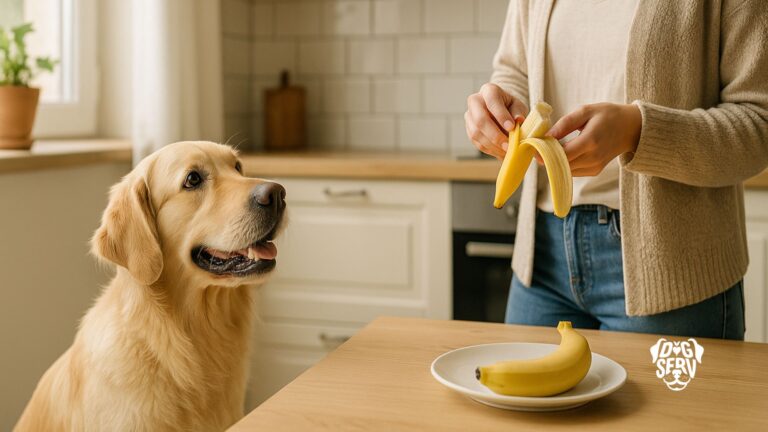
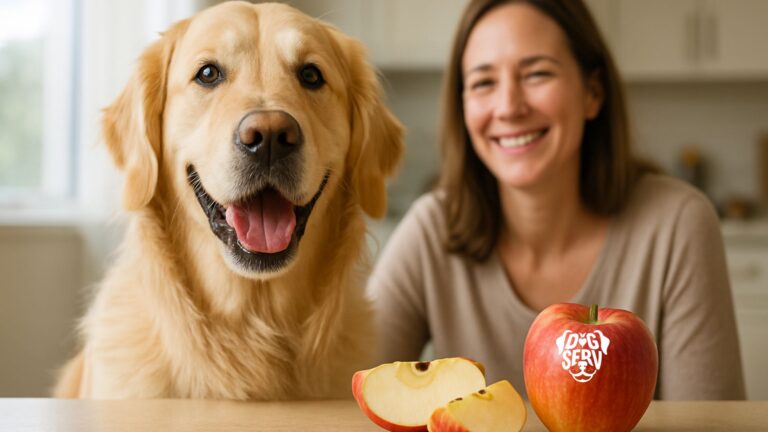
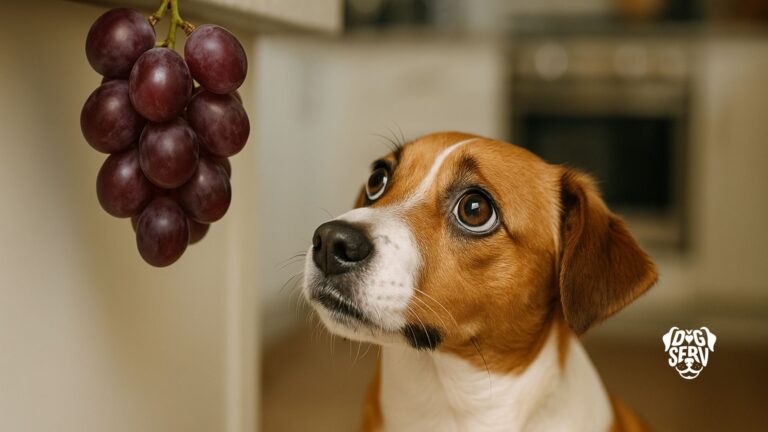
Calvin Hewitt is the primary author and driving force behind DogServ, bringing over 27 years of business expertise and 7 years of specialized digital marketing experience to the dog service industry. As the founder of Web Leveling and architect of DogServ’s evolution from a simple directory to a comprehensive one-stop shop for dog lovers, Calvin has created highly performing dog training websites in competitive markets, developed popular applications like “Can My Dog Eat?” and “Puppy Planning Checklist,” and generated thousands of monthly page views with his dog service content. Based in the Houston area but serving dog lovers and service providers nationally and internationally, Calvin works alongside a dedicated team of seven professionals, combining analytical rigor from his banking and energy industry background with a genuine passion for connecting dog owners, dog lovers, and service providers through quality content, innovative applications, and trusted recommendations.